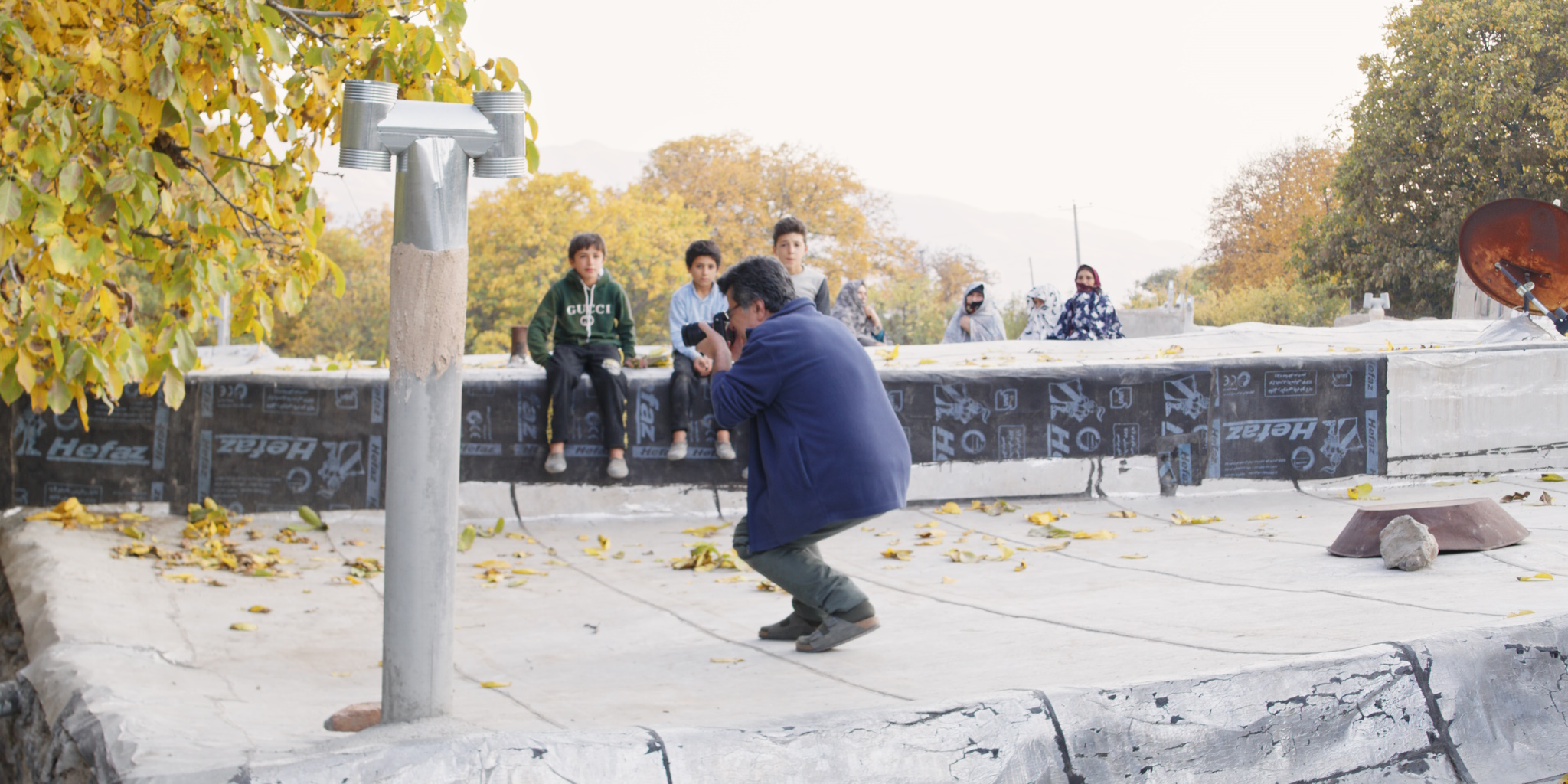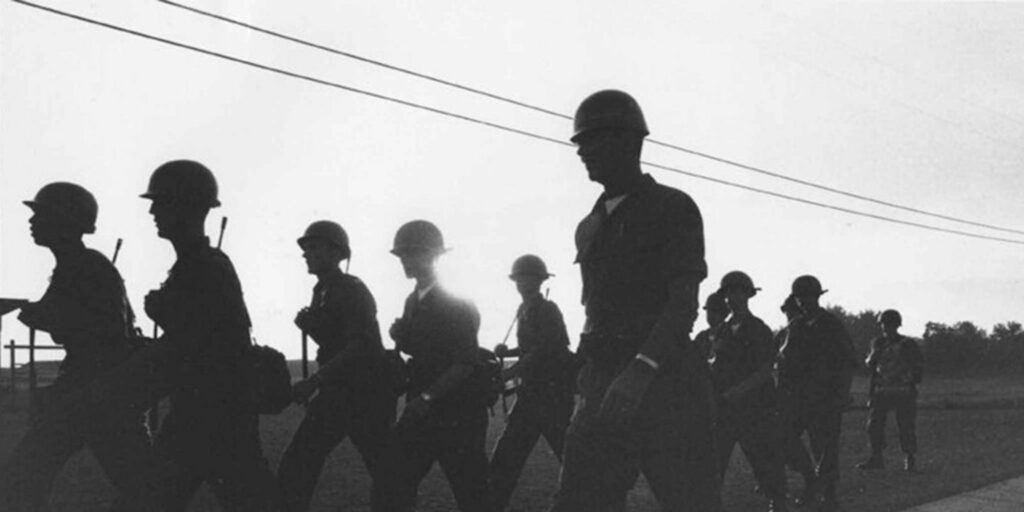To observe something is to change it. This adage is often invoked in both quantum mechanics and documentary filmmaking, but Iranian director Jafar Panahi’s No Bears is the rare narrative feature that engages with the principle. Of course, Panahi is better positioned than most filmmakers to grapple with the sticky subject of the observer effect. Since his 2010 conviction on charges of anti-government propaganda, the director has steadfastly skirted and even outright ignored his court-mandated 20-year filmmaking ban. Following his 2011 house-arrest documentary that is definitely not a movie, Panahi has notably incorporated autofictional and metafictional elements to varying degrees in his narrative shorts and features. The vicissitudes of contemporary Iranian society remain a dominant subject for the filmmaker, but in the past decade, Panahi has also exhibited a fascination with how movies – and, specifically, his own contributions to the medium – depict and shape that society.
No Bears is arguably the filmmaker’s darkest, most disaffected feature since his Schrader-esque crime thriller Crimson Gold (2003). However, Panahi’s anger is not directed, as one might expect, at the autocratic government that has shackled him, both figuratively and literally. (In fact, Panahi was just released from a seven-month stretch in prison, a detention that only ended after the director defiantly embarked on a hunger strike.) Instead, No Bears is a startlingly harsh work of self-critique, a two-pronged deconstruction of the artist’s oblivious egotism and bull-in-a-china-shop propensity for leaving devastation in his wake. Although the film is too smartly constructed and too purposeful in its ambiguities to feel like a truly raw howl of self-loathing, there is still something disarming about one of the world’s most notoriously oppressed directors turning his critical eye on himself. Simply put, No Bears is about how everything Jafar Panahi touches turns to shit, a stark message that has the eccentric (and perhaps intentional) effect of underscoring the director’s fallible humanity.
The film follows Panahi, playing a fictionalized version of himself, as he is staying in a small, remote village that lies a stone’s throw from the Iran-Turkey border. Put up in a spare room owned by the voluble, obsequious Ghanbar (Vahid Mobaseri) and his elderly mother (Narges Delaram), Panahi wanders the rustic settlement by day, snapping photographs and contending with spotty Wi-Fi. Ostensibly, the director is here to scout potential filming locations, but in truth he has situated himself near the border to be close to his current production, which is shooting just over the hills in a small Turkish city. His second-unit man, Reza (Reza Heydari), is handling the on-site directing duties, while Panahi monitors everything via his laptop, watching scenes play out in video calls and providing feedback to his cast and crew (when the Internet deigns to cooperate).
The film-within-the-film is an unnamed romantic drama, centering on would-be defectors Bakhtiar (Bakhtiyar Panjeei) and Zara (Mina Kavani), who are trying to flee from Iran to Europe. It appears to be a grounded, slow-burn affair as international thrillers go, dwelling on the procedural details of forged passports and the exact timing of the couple’s escape. To add another layer of meta-complexity, this film is itself a work of docufiction, recreating (and perhaps embroidering) the real-life tribulations that are still unfolding for Bakhtiar and Zara. It would be a difficult production under any circumstances, but Panahi’s fearful reluctance to helm the film himself – which would require him to leave Iran illegally – is exacerbating the situation. (There is a revealing moment during a nocturnal visit to the border where Panahi recoils instinctively from the invisible boundary, as if it might burn him.)
Meanwhile, the filmmaker becomes embroiled in a local dispute, initially through pure happenstance. Several of the townsfolk approach Panahi to contend, politely but insistently, that he unknowingly captured an image of a couple tarrying in a nearby grove on his digital camera. Unfortunately, the young woman in question has been betrothed since childhood to another man, and the existence of photographic evidence of her infidelity (however chaste) escalates an existing love triangle to dangerously volatile levels. Panahi, for his part, insists that he never took such a picture, and in fact seems annoyed by the whole situation, for any number of reasons. Apart from his thinly veiled contempt for the village’s reactionary traditions and his natural disinclination to play the part of a moralist snitch, the director also seems to be wary of the attention this provincial soap opera might bring down on his head. Eventually, the village’s sherif, or head man (Naser Hashemi), makes his peril explicit: Why, precisely, is this famous dissident filmmaker staying in this particular village, so close to the border?
Panahi plays all this close to his chest, both in his performance and in the film’s overall construction. Despite its straightforward presentation, No Bears is a shrewd, slippery film, recalling landmarks in cinematic ambiguity such as Caché (2005) and Certified Copy (2010). The viewer pointedly never sees what Panahi’s camera allegedly captures. In fact, the fateful moment in question flicks by quite innocuously: Panahi quickly takes a couple of snapshots of something offscreen and then turns his attention elsewhere. Later, the villagers keep demanding that he hand over the incriminating photo, and Panahi keeps explaining with mounting irritation that that’s not how digital photography works. At one point he makes a show of scrolling through the images on the camera’s memory card in front of the village elders, but not before fiddling surreptitiously with the device. Perhaps to delete the damning image? Or to scrub some other detail that might threaten him in a more personal way? No Bears isn’t saying; the weight and contours of Panahi’s various motives are largely left to the viewer’s interpretation.
No Bears unspools like the dark reflection of Panahi’s last feature, 3 Faces (2018), which around its midpoint shifts from its grim true-crime setup to a quirky, digressive road dramedy. Here, the low-key farce of culture clash and Internet lag mutates into something more strained and ominous, as the situations on both sides of the border slowly spiral out of Panahi’s control. If there’s an obvious criticism to be leveled at No Bears, it lies in the lack of narrative coherence between the local A Plot about the contentious photograph and the distant B Plot about the troubled film shoot. The relationship between these two strands is almost entirely thematic, and at times they feel so disconnected that they seem to be unfolding in different movies.
Which might, in fairness, be the whole point. Panahi is so preoccupied by the absurd photograph drama that he literally loses the plot where his film production is concerned. He lies by omission to his cast and crew and makes potentially reckless gambles at the fuzzy intersection of fact and fiction. Meanwhile, the frustrating disconnect he feels from the film shoot in Turkey intensifies his testy arrogance, leading to one bad decision after another in his dealings with the villagers. Panahi would probably describe himself as a dispassionate observer of their quaint (read: reactionary) traditions. However, the mere fact of his presence destabilizes the village, and his every attempt to insist upon his above-it-all neutrality reads as an artiste’s entitlement or a city-slicker’s condescension. It’s the sort of tragic, socially convoluted drama that normally attracts fellow Iranian director Asghar Farhadi. However, Panahi’s approach to the material makes it feel less like a thoughtful morality play and more like lacerating auto-critique.
Doubtlessly, some of the themes touched on in No Bears will be lost on American audiences, particularly when it comes to the urban-vs.-rural dichotomy and the thorny geopolitical triangle of Iran, Turkey, and Western Europe. However, it is the film’s acidly confessional character that will likely linger for many viewers. No Bears feels foremost like Panahi’s admission that he can be such a disruptive, head-up-his-ass prick that he can disastrously bungle situations in two different countries simultaneously. Perhaps this is just a different kind of artistic pretension, one rendered more palatable by its ripe self-loathing. No matter. After almost three decades as one of international cinema’s most esteemed auteurs and 13 years of state-sanctioned persecution, Panahi has arguably earned the right to dwell on his personal and artistic shortcomings, and on the hidden risks inherent in the act of observation.
No Bears screens nightly at 7:00 p.m. on Feb. 17 – 19, 21, 24, and 26 at the Webster University Film Series.





One Response
Andrew does the movie play on line anywhere?